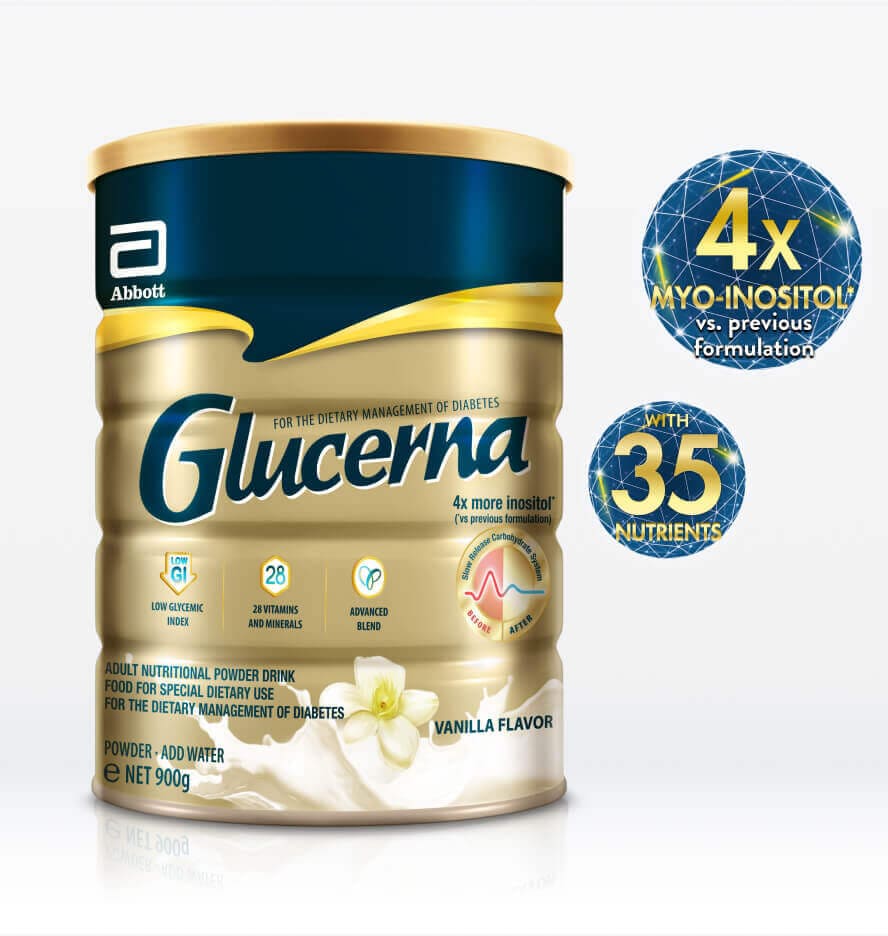Managing diabetes as a family
- Title
- Managing diabetes as a family
- Short Description
-
In the journey of managing diabetes, family support is your secret weapon
- Detail Page Path
Screenshot source: ABS-CBN News
Remember, you are not alone. In the Philippines, 4.3 million or 7.5% of adults between 20 and 79 years old have diabetes as of 2021 7.5% of adults between 20 and 79 years old have diabetes as of 2021. Finding diabetes support groups, educating yourself about your health, and making smart changes may help you manage your condition, so you may live life to the fullest.
In addition to support groups, understanding diabetes is a foundational step that highlights the importance of emotional support from family and friends. They may help you adjust to a new lifestyle and provide the necessary encouragement to manage your health effectively.
To help you navigate this new reality, below are some tips2 Abbott Newsroom on what you may do:
It is crucial to find the right team of health professionals – especially ones that are familiar with your health history. Your team may include a doctor, a registered dietitian, an exercise physiologist, and other specialists as needed.
To overcome a challenge like diabetes, knowledge is key. Understanding the ins and outs of your condition – from nutrition to exercise and blood sugar management – may help you manage it effectively. Educating yourself through resources and educational materials may give you the tools you need to stay healthy.
It is important to have your diabetes devices, including a glucometer, with you at all times. Regular monitoring of your blood sugar levels may help you understand how your body responds to different types of food, activities, and medications.
Living with diabetes may be challenging, but you do not have to do it alone. Seek out a positive support system that will motivate, encourage, and empathize with you. In the Philippines, social media groups are a convenient way to connect with others who are facing similar challenges.
Screenshot source: ABS-CBN News
Exercise is important for managing diabetes, together with proper rest and diet. Consult your doctor before starting a program, and find exercise buddies for accountability. Incorporate exercise into daily life, like taking the stairs or going for a walk. Consider joining a gym or regularly playing a recreational sport, but consult your doctor first if you are trying rigorous activities for the first time.
Another important thing to consider in managing diabetes is maintaining a healthy diet. It may help you manage your blood sugar and normalize sugar levels, along with proper rest and exercise. Here are some tips3 to help you manage your diet:
Portion control is essential in managing blood sugar for those with diabetes. To create a balanced meal, fill 25% of a 9-inch plate with protein, 25% with whole grains and starches, and 50% with non-starchy vegetables.
Managing diabetes requires careful planning of your food consumption. It is essential to eat regular balanced meals, and avoid skipping meals, as doing so may cause low blood sugar levels and lead to fatigue, dizziness, and confusion. Additionally, skipping meals may cause overeating, leading to sudden spikes in blood sugar levels, which may be dangerous and cause long-term complications.
To avoid blood sugar spikes and weight gain, choose healthy snacks that are low in sugar, sodium, and unhealthy fats. Protein-rich dairy products, fruits like apples or berries, vegetables, or a small serving of nuts are options for healthy snacking.
Screenshot source: ABS-CBN News
In addition to these methods, another way of managing blood sugar levels is to consider taking diabetes-specific-formulas (DSF) such as Glucerna, along with proper diet, daily activities, and rest.
According to Dr. Jose Rodolfo Dimaano Jr., nutrition medical director for Abbott in Asia Pacific, a DSF like Glucerna works by slowly releasing carbohydrates which helps the body produce insulin naturally.4 It also contains inositol that helps convert sugar into energy that can be utilized by the body with balanced diet and regular exercise.5
Remember, a diabetes diagnosis may be just a new chapter in your life. With the right management plan - including regular physical activity, a healthy diet, proper nutrition and medication as prescribed by your doctor, you may live a full and active life.
References:
3 Abbott Newsroom, 4 Wellness Steps to Take After a Prediabetes Diagnosis
4 Bodnaruc AM, et al. Nutr Metab. 2016; 13:92
5 Minambres I, et al. Clin Nutr. 2019; 38:1146-1152.
In the journey of managing diabetes, family support is your secret weapon
Tips on helping you manage diabetes and your emotions in the initial days through positive lifestyle changes.
Do not let meal preparation stress you out, especially when you are managing diabetes.
Glucerna® is the number 1 selling diabetes nutritional supplement in the world*. It contains 35 nutrients, slow-release carbohydrates and 4x more inositol vs previous formulation, that delivers a dual action for tight blood sugar control.
* Euromonitor International Limited; total global retail sales in 2023 for diabetic diet enhancer drinks that are not marketed as a meal replacement product. Euromonitor and Abbott calculation based in part on custom research conducted between October and November 2023 and Euromonitor Passport Consumer Health 2023 based on 2022 data.

PH.2025.67670.GLU.1
You are about to exit for another Abbott country or region specific website.
Please be aware that the website you have requested is intended for the residents of a particular country or region, as noted on that site. As a result, the site may contain information on pharmaceuticals, medical devices and other products or uses of those products that are not approved in other countries or regions.
The website you have requested also may not be optimized for your specific screen size.
Do you wish to continue and exit this website?